(Jason Dikes holds a degree in broadcast communications from Stephen F. Austin State University, an MA in history from the aforementioned institution, and an MLS from The University of North Texas. He currently is an adjunct professor American history at Austin Community College and a cataloging librarian for the City of Round Rock. His complete collection of articles for this site may be found here. He may be reached at jdikes@austincc.edu.)
 Following what has become a tradition over the last four years of the jonestown report, this is our annual review of podcasts dealing with Jim Jones and Peoples Temple. This edition covers podcasts – in chronological order of their appearance below – from Midnight Writer News, Anthology of Horror, Even the Podcast is Afraid, Mr. Bunker’s Conspiracy Time, What’s Wrong with Them?, The Alarmist, The Return of the Repressed, Weird Darkness, Morning Cup of Murder, and Escape from Jonestown; followed by the webisode, The Rise and Fall of the Peoples Temple Cult (Jonestown Massacre). Reviews from previous years can be found for 2021, 2020, 2018, and 2017. To learn more about podcasts in general, I refer you to a primer written in 2017.
Following what has become a tradition over the last four years of the jonestown report, this is our annual review of podcasts dealing with Jim Jones and Peoples Temple. This edition covers podcasts – in chronological order of their appearance below – from Midnight Writer News, Anthology of Horror, Even the Podcast is Afraid, Mr. Bunker’s Conspiracy Time, What’s Wrong with Them?, The Alarmist, The Return of the Repressed, Weird Darkness, Morning Cup of Murder, and Escape from Jonestown; followed by the webisode, The Rise and Fall of the Peoples Temple Cult (Jonestown Massacre). Reviews from previous years can be found for 2021, 2020, 2018, and 2017. To learn more about podcasts in general, I refer you to a primer written in 2017.
A few general comments about this year’s entries before I offer individual reviews:
Some of this year’s entries are older podcasts that were not covered in previous reviews. I do not know if I missed them before – quite possible – or if they weren’t available on Apple’s pod catcher, which is my default app for finding episodes. Some of this year’s crop are available on different pod catchers so you may have to visit the various websites or Spotify to hear them.
Secondly, there has also been a raging debate in podcasting about sources, and unfortunately, the problem infected Peoples Temple podcasting this year. Podcasts are neither journalism nor scholastic writing and so are not required to list their sources. Some podcasts have plagiarized journalists, books, and even other podcasts without giving credit. In fact, Crime Junkie, one of the most popular podcasts in America, had to pull several episodes over this type of wholesale expropriated content.
Finally, there were some bad shows this year. Normally I skip those, but I felt the need to warn off several of them. Quantity doesn’t mean quality.
Beginning with a couple that I missed from earlier years:
 Midnight Writer News (April 9, 2018 & July 31, 2018)
Midnight Writer News (April 9, 2018 & July 31, 2018)
S.T. Patrick hosted two separate guests for these two episodes: Jim Hougan on April 9 and Joseph Green on July 31. I liked both for some same reasons: they focus on Jones’ 1960-64 travels and his long friendship with CIA agent and all-around bad guy Dan Mitrione, an Indiana boy best known for teaching Latin American dictators the best ways to torture dissidents. I also liked that both admitted that while they could ask questions about the weird coincidences and holes in the narrative, they didn’t have answers and I appreciate that level of honesty.
Green spent a lot of time discussing Guyana’s history and how that history to the creation of the two major parties in Guyana, the Afro-Guyanese and the Indi-Guyanese, and the CIA’s role in promoting one group over another. These are all good things, but there are some areas of discussion that gave me pause.
Green and Patrick both talk about how Jones sold monkeys to the University of Indiana Bloomington, which I could find no basis for, and that the same university appears in some of the remaining MK ULTRA documents where LSD experiments were conducted. Okay. Is that it? Is there more here? The CIA recruited the monkey dealer?
Green flat out states that Jones was secretly on the Right, that he worked on a “get out the vote” campaign for Richard Nixon during the Temple’s Ukiah years. Although Jones did state in a telephone conversation with Marge Boynton, head of the Republican National Committee, that he was a Republican, there’s no record of him working to get Nixon elected and this was during the period when the Peoples Temple was reaching for contacts across a broad political spectrum.[1] Green’s conclusion is that Jones was part of a larger effort by the CIA to discredit or scare the hippies and the New Left. Other elements of this CIA campaign include Charles Manson to discredit the hippies and the Zodiac to kill them, although none of the Zodiac’s known victims (I’ll leave the door open) were hippies.
Overall, good, but some strange tangents and many claims are made that desperately needed citations.
I enjoyed Jim Hougan’s appearance much more. It covers a lot of the same territory but with fewer tangents, as Hougan patiently walked through one of his main research areas: Jones’ travels from 1960-1964. There are a lot of interesting questions here that should not just be brushed off about Jones’ trip to Cuba, where he allegedly met Castro, his Brazil years where he was financially supported by unknown means, his ability to be in two different places at one time, and his two passports. Hougan also has a website with three articles on it about Jones and Peoples Temple.
While Green and Hougan both agree about the strong possibility of CIA involvement, Hougan states that he believes the CIA having created a “Frankenstein” (CIA jargon) cut ties with Jones after Mitrione’s 1970 murder, whereas Green believes there were ties to the CIA until the very end. These are good episodes that ask legitimate questions.
 Anthology of Horror (June 27, July 3, July 6, July 11, 2019)
Anthology of Horror (June 27, July 3, July 6, July 11, 2019)
The host, Springheel Jack – which is the name of a serial killer in a short story by Stephen King who stalks college women on a college campus – spends multiple episodes reading from Jeff Guinn’s 2018 book The Road to Jonestown. That’s all he does. At one point, I took out my copy of Guinn’s book and read along. He doesn’t even provide commentary or talk about what he’s just read. I don’t know a lot about copyright law, but Jeff Guinn might have a case here.
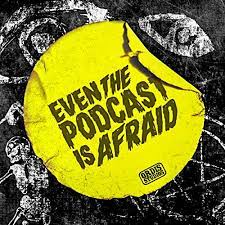 Even the Podcast is Afraid (formerly known as “Storytime”) (January 20, February 2, February 10, & February 24, 2020)
Even the Podcast is Afraid (formerly known as “Storytime”) (January 20, February 2, February 10, & February 24, 2020)
This one started off strong by talking about Peoples Temple as a “new religious movement” instead of a “cult.” My enthusiasm lasted about ten minutes and then circled the drain along with the show’s content. There are so many mistakes and just outright offensive things said that I can’t catalog them all, but here are some highlights.
The hosts question whether one can practice communism and be a member of a church. This leads to an attempt to discuss Apostolic (one of many words they cannot pronounce) Socialism, which they admit they don’t know much about. It appears that they made no attempt to research the issue. At one point, when referring to Jim’s upbringing they ask, “How do you become a Communist at age 15?” Being poor and reading a lot like Jim would be my answer.
They also seem to think that communism and Nazi socialism are the same thing, which they aren’t. For openers, Hitler’s socialism was based on race, not economics. Nevertheless, this error – willful or otherwise, it’s hard to tell with these guys – leads to the coining of the phrase “Jesu-Naziism,” an insult to the many, many Christians who died resisting the Nazis. The hosts repeats this many times in a voice which sometimes sounds like Elvis Presley and other times sounds Chinese.
It never gets better. Buttsex is mentioned more than once. They claim that Islam made Jones leave California, and that Mike Prokes committed suicide at Jonestown. They cannot pronounce “Feodor Timofeyev” so they just call him “Vodka.” Yes, the consul in the Soviet Embassy in Georgetown is nicknamed “Vodka” because these guys can’t be bothered to Google the pronunciation.
I understand humor. I also understand that Peoples Temple is a sensitive subject. But if you want some levity about the Temple, go listen to the multi-part episodes done by Last Podcast on the Left. At least there the jokes are intentional.
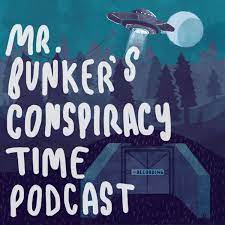 Mr. Bunker’s Conspiracy Time (March 4, 2020)
Mr. Bunker’s Conspiracy Time (March 4, 2020)
It takes 27 minutes to get to the actual content of the episode, which then presents a standard history of Peoples Temple. It takes them another 36 minutes to get to the conspiracy theories. The conclusions are that the CIA orchestrated the murders, and that Jim Jones was a CIA agent who helped the agency continue MK-ULTRA after it was “shut down” in the mid-1970s. Standard fare for this genre.
Their proof is also standard fare: the changing body count, the fact that the bodies were laid out in rows and stacked on top of each other, that relatives were not allowed to see the dead, that only seven autopsies were performed, that bodies were stripped of identification, that there are pictures of gunshot wounds on the bodies at Jonestown, and that there are still 5,000 pages of documents being kept secret.
Their website does mention multiple sources, many from this site, including the book by Michael Meiers – which flat out states that Jonestown survivors Tim and Mike Carter were part of the Port Kaituma assassination squad – and the John Judge article from 1985. They mention none of the many articles that refuted those two sources.
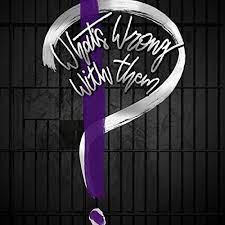 What’s Wrong with Them? (March 8, 2021)
What’s Wrong with Them? (March 8, 2021)
Hosted by Adare, who holds a master’s degree in forensic psychology and is a practicing therapist, this is a diagnostic podcast. Putting aside the problems with psychoanalyzing someone you never actually talk to, it’s a good little episode and as far as I am aware, no one has tried anything like it. She feels that Jones had schizo-typal personality disorder and then gives examples to support her thesis. She jumps around the timeline a lot, so it’s not a podcast for a novice in Peoples Temple history.
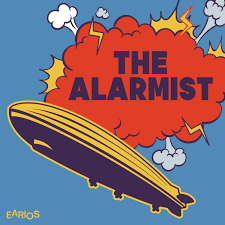 The Alarmist (April 5, 2022)
The Alarmist (April 5, 2022)
In this podcast, actress Rebeca Delgado Smith accompanies guests as they walk through the basic Peoples Temple story and they look for who is responsible for what happened. As they work their way through the story, the have a “board” where they track possibilities for who or what is to blame. By the end, the “board” consists of: the tumultuous 60s & 70s; Jim Jones; theater of the Church (Jim being a pastor when he was an atheist); the Good guy mask; Sunk cost fallacy (followers had given up so much to follow that they were embarrassed to leave); doomsday paranoia; human nature; publicity without human intervention (the lack of a critical press during the 1970s period); and control of information (the lack of any news in Guyana that wasn’t filtered through Jones). At the end they cut some of these, fold others into each other and come to conclusions which I won’t reveal here.
I could not find a list of sources, but they do mention them in the podcast. They include a Rolling Stone article, the “Death Tape,” the Julia Scheeres book, the Paradise Lost documentary, and a couple of web articles.
I really enjoyed this podcast. It reveals nothing new, but it was pleasant to hear people who are not deeply informed on the subject talk about it and then draw their own conclusions, some of which are the same conclusions that scholars and other experts have come to as well.
A second episode, the aftermath, brings on a different guest, Nicole Rittenmeyer who directed the documentary Jonestown: the Women behind the Massacre (2018) ()
Their discussion is about the women’s role as helpers According to Rittenmeyer, Jim Jones was not a person who could run, or even wanted to run, the day-to-day operations of the church in the U.S. or the agricultural project in Jonestown. Instead, Marceline filled this role in Indiana, then Carolyn Layton filled it in California and Guyana. Her point – one that I as a man was never aware of – is that the history of feminism can somewhat be seen in some women’s experiences in Peoples Temple, that outside of Peoples Temple, women like Layton and Maria Katsaris might not have been able to rise to such positions of power. Rittenmeyer does stress that this was only the experience of white women. She states that Stephan Jones has a theory for why it was only white women, but Rittenmeyer doesn’t tell us the theory.
When asked point blank for one person, thing, or concept that is responsible for November 18, Rittenmeyer says she can’t blame one person. Jones is clearly the catalyst, but he lacked the organizational skills, and was too strung out on drugs, to carry it out alone. But, she adds, women can’t shoulder all the blame either. Ultimately Rittenmeyer feels there are too many layers for a simple answer.
For the second half of the episode, Smith’s guests from the April 05 episode come back and reaffirm the conclusion they came to in that episode. You can probably skip that.
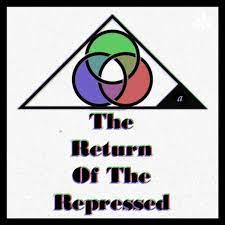 The Return of the Repressed (May 11, May 18, May 25, June 1, 2022)
The Return of the Repressed (May 11, May 18, May 25, June 1, 2022)
The host, Marcus, is a self-proclaimed leftist who aims to use a psychoanalytical method known as the “Four Discourses,” developed by Jacques Lacan, to “get [into] the heads of those who defected from American imperialism in the 70s.”
This is not a casual listening podcast. I sat at a desk with nothing but this podcast playing. I stopped to look things up on the internet. I played sections over to try and understand the methodology being explained. If you are not familiar with the Four Discourses, you will have to be an active listener. Frankly, I really wish there were transcripts of this show, it seems like the kind of thing you want to be able to mark up and flip a few pages back and forth while reading. It also seems to me that there is not a tight script being used. As an educator myself, when I introduce a new concept, I stick to a tight script and use simple examples. For instance, in episode three, during the discussion of the Discourse of the Hysteric, Marcus discusses how a new “quilting point” is made. Right there, an example using Peoples Temple should have been given, but is not.
What about the content? If you enjoy group dynamics and how meaning is created, interpreted, and passed along, then you could enjoy this. I can’t say I enjoyed all of it, but I did learn something. I also liked that Marcus spent time examining Joe Mazor, one of the more fascinating and frustratingly under-researched characters in this whole story.
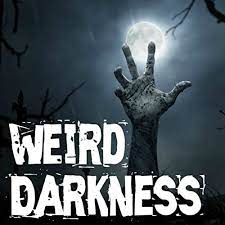 Weird Darkness (May 10 and July 8, 2022 )
Weird Darkness (May 10 and July 8, 2022 )
Hosted by Darren Marlar, the podcast featured Peoples Temple on two different episodes.
May 10, 2022: “Did the CIA orchestrate the Jonestown Massacre?”
This episode covers many of the same points and conclusions that were made on Mr. Bunker’s Conspiracy Time. However, this adds some leading questions: Why did Jonestown have so much anti-psychotic medication in stock? Why were residents of Jonestown given daily medical assessments? Why was Jonestown built on the site of an old CIA training camp? It also offers new “facts”: Larry Layton killed Leo Ryan. Jim Jones studied voodoo in Brazil in 1962. Enough truth is mixed in to make what isn’t true or what can’t be proved one way or another seem plausible.
The host makes a big deal about U.S. Embassy Deputy Chief of Mission Richard Dwyer, who was CIA, and Jones’s repeated message on the Death Tape “to get Dwyer out of here.” What it ignores are eyewitnesses like reporters Charles Krause and Tim Reiterman, who were with Dwyer during the Port Kaituma airstrip shooting and through the entire night.
The host also states that there were “no known eyewitnesses to the deaths,” thus negating the presence of the seven survivors who were there, all of whom gave their accounts to the Guyana Inquest and/or the FBI. None of those statements supports anything the host says here.
The website for the show only lists one source for this, an online article at Unredacted.com, which itself has no author. The write musty have requested anonymity.
To sum up, the CIA did it. That means Krause, Reiterman, and the seven survivors are all CIA. Or liars. Or both.
July 8, 2022: “Issues caused to First Responders”
(An ironic sidebar: the commercial that played before this episode was for CIA recruitment. The second time I listened, it was for probiotics.)
I have a problem with this episode: none of the conspiracy thinking from the previous episode is here at all. Jonestown being built on an old CIA site? Not mentioned. All the stuff about body counts and bodies being moved and stripped of identification? Never mentioned. The host also talks a lot about how Jones was deteriorating due to drug use, information which apparently didn’t warrant a mention in the conspiracy episode. It’s almost as if he doesn’t really believe in any of the conspiracy stuff, that he just did it for downloads because the words “CIA conspiracy” will get attention. Maybe I’m too cynical.
In any event, this episode focuses on the teams sent by the United States to collect the dead and the traumas they suffer. Unfortunately, Marlar doesn’t reach that point until 50 minutes into a 63-minute podcast. He has some quotes from a worker named Patricia Edwards, who was a civilian worker at Dover when the bodies of the Jonestown dead arrived. All the quotes and paraphrasing come from a Time magazine article from November of 2018. He does provide one important source, a report done by the Defense Technical Information Center about the effects of the Jonestown cleanup on personnel which can be downloaded.
 Morning Cup of Murder (May 13, 2022)
Morning Cup of Murder (May 13, 2022)
This is a neat idea for a podcast. For each day of the calendar – the episode of Jim Jones dropping on his birthday, May 13 – the host does a 20–25-minute episode about the subject’s crimes. It is short, but it is factually correct. The podcast’s webpage lists sources as Wikipedia and a Rolling Stone article. I kept listening to this show for a while after this episode. It’s better than some of the other shows reviewed this year.
 Escape from Jonestown n.d. only available through Audible
Escape from Jonestown n.d. only available through Audible
For all practical purposes, this is Tim Carter’s autobiography: he is front and center the focus of the narrative. Some other interviewees are mixed in to provide context or help move the narrative along in places where Carter was not present. The only new material here is Carter’s background before he joined Peoples Temple, his childhood in a family with an abusive father, the childhood experience that led to a social justice awakening, his experiences in Vietnam, and the postwar trauma that led him to Peoples Temple. It’s almost a perfect recipe for a Jim Jones recruit: an intelligent young man with a poor father figure, wants to do good in the world, and deeply traumatized by war. Even without Jones’ mind tricks, I feel like Carter would have wound up in the Temple.
One story really stuck out. One of the key components of Peoples Temple is family separation. Tim, his sister Terry, and his brother Mike were all in Peoples Temple. But they were so separated by their duties that no sibling was aware that the other siblings had romantic relationships. Tim says he dated Gloria for a year before Terry and Mike learned about it. Imagine living in the same city and working for the same organization, but being so isolated from family that a whole year goes by before they know you’re dating someone. This happened in multiple families, but hearing it is always a creepy reminder of how Jones operated.
This is only available through Audible, but you can start a free 30-day trial at their website. All six episodes only take 2.5 hours to listen to and then you can just cancel your subscription. (I was not compensated for this commercial.)
 The Rise and Fall of the Peoples Temple Cult (Jonestown Massacre) September 10, 2022, YouTube
The Rise and Fall of the Peoples Temple Cult (Jonestown Massacre) September 10, 2022, YouTube
This is the debut episode or webisode of the Buzzfeed Unsolved Network, which had been previously run from 2016 to 2021. It appears to have been resurrected. The hosts, Merle and Joyce, are social media “influencers,” are people who have built a reputation for their knowledge and expertise on a specific topic. I’m not so sure that definition applies here for this topic, but let us proceed.
Let me start with the good. The hosts point out that villains don’t always start out as villains, and that Peoples Temple did do some good in this world. Education programs, rehab programs, trying to get people of all races to live and work together for causes bigger than themselves. The hosts even admit that had they been alive, they might have joined Peoples Temple.
Then there is the bad. Most of the artwork is ok but there is one hilarious depiction of Jones during the 1950s where he has long, white hair and beard. He looks like what Howard Hughes was rumored to look like in the 1970s when he disappeared from public view. If Jones ever looked like that in 1950s small-town Indiana, we would have known about it long before now. San Francisco is completely absent, as are Jim’s deep political connections throughout the state of California. The whole episode is only twenty minutes long, so it can’t be in-depth, but for the Temple’s headquarters to be completely absent? Also, Jones’ socialist beliefs and how they influenced his vision are not mentioned other than a passing reference to Karl Marx.
And finally, if you haven’t been paying attention, there is an ongoing re-examination of American history through a racial lens. It’s been going on for decades, but really ramped up after the 1619 Project. It appears here as well.
Sikivu Hutchinson, who has written for this site, states that Jones’ white female lieutenants – which would have to include Maria Katsaris, the Moore sisters, Debbie Layton, and Sharon Amos (none of whose pictures, widely and freely available are used) – were the ones who wrote the checks, raised the money, smuggled the guns, seduced the politicians, and kept Peoples Temple running. This leads the white host, Joyce, to say that people who looked like her were ultimately responsible for the deaths of hundreds of African Americans. The African American host, Merle, then says that Jim Jones created a space where the wrongs of society were still perpetuated.
The implication here was clear to me: Peoples Temple is just another example in the long history of white Americans abusing and ultimately killing black Americans. I could be wrong, but that’s what I took away and I could see how that argument can be made. You will have to decide on your own.
That’s it for this year.
Note
[1] Reiterman, Raven (2008 edition), pgs. 152-53.